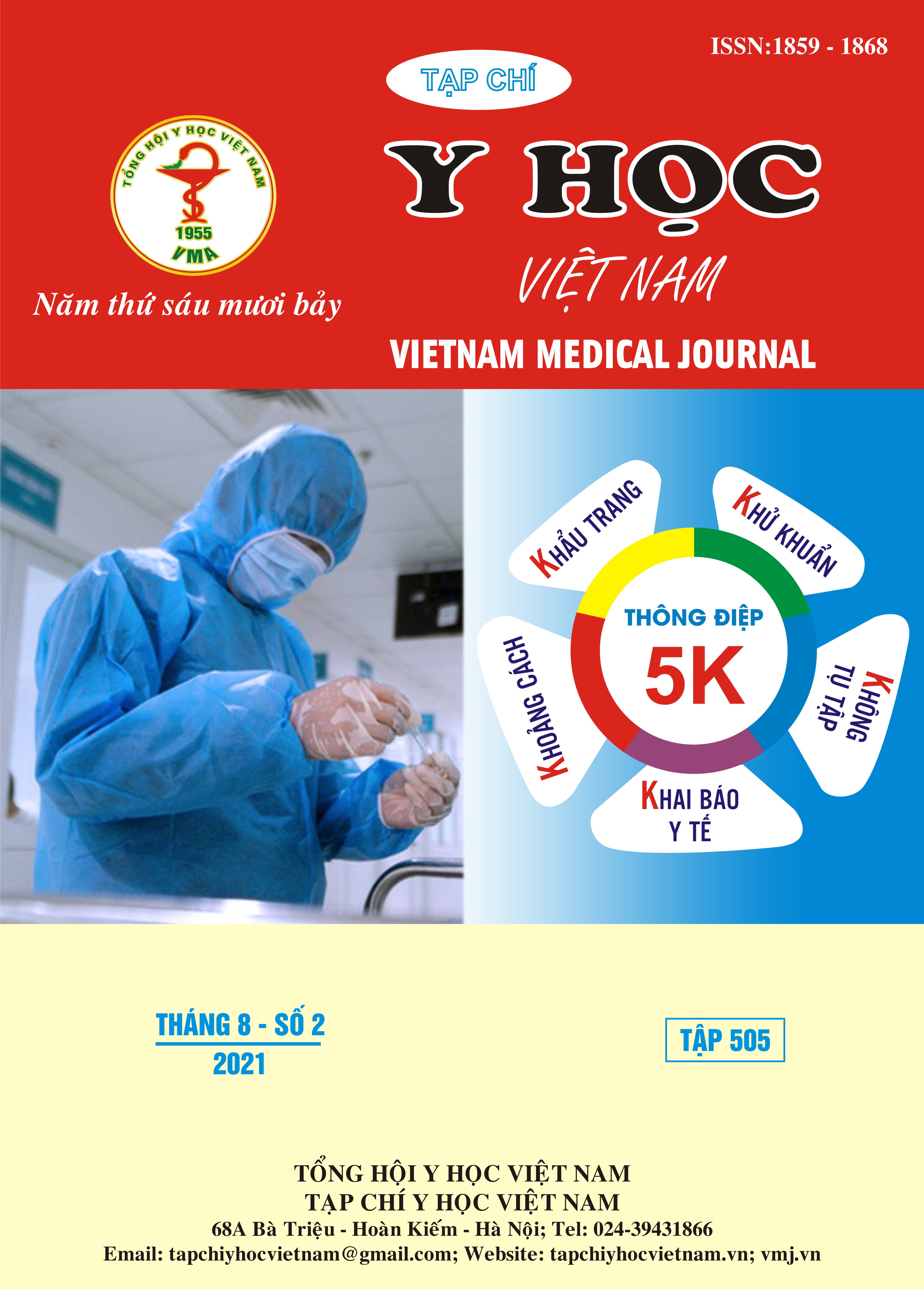LONG-TERM RESULTS OF CURATIVE GASTRECTOMY FOR CANCER AND RELATED CLINICOPATHOLOGICAL CHARACTERISTICS
Main Article Content
Abstract
Gastric cancer is among the most frequent and the most fatal among malignancies. Aims: Evaluate the correlations between longterm results of curative surgery in the treatment of gastric cancer at Viet Duc University Hospital and related pathological characteristics. Patients and Methods: Descriptive retrospective study on 302 gastric cancer patients underwent curative surgery at Viet Duc University Hospital from 2014 to 2018. Results: Average overall survival (OS) time was 43.4 ± 17.91 months [10.3-82.6]. OS 1,3 and 5-year was 97%, 77% and 71%, respectively. OS 5-year according to diseage stage: 0, Ia, Ib, IIa, IIb, IIIa, IIIb and IIIc was 100%, 96.7%, 92.2%, 93.2%, 74%, 48.4%, 31.2% and 25.9% (p<0.001), respectively. According to number of metastatic lymph nodes: N0, N1, N2, N3a and N3b was 93.6%, 54.4%, 51%, 0% and 0% (p<0.001), respectively. According to differentiation level: well, moderate, poor, ring-cell was 81.8%, 82.2%, 66.4% and 64.2% (p=0.048), respectively. According to the presence of mucinous pattern: presence and absence was 70.7% and 70.6% (p=0.551), respectively. According to lymphovascular invasion: presence and absence was 55.8% and 91.2% (p<0.05), respectively. According to Lauren classification: intestinal and diffuse type was 72.7% and 69.1% (p=0.32), respectively. Conclusion: Disease staging, number of metastatic lymph nodes, differentiation level and lymphovascular invasion significantly associated with overall survival rate while the presence of mucinous pattern and Lauren classification were not prognostic factors.
Article Details
Keywords
Gastric cancer, overall survival
References
2. H. Katai, T. Ishikawa, K. Akazawa và cộng sự. (2018). Five-year survival analysis of surgically resected gastric cancer cases in Japan: a retrospective analysis of more than 100,000 patients from the nationwide registry of the Japanese Gastric Cancer Association (2001-2007). Gastric Cancer, 21(1), 144-54.
3. Đỗ Đức Vân (1993). Điều trị phẫu thuật ung thư dạ dày tại Bệnh viện Việt Đức (1970-1992). Y học Việt Nam, (7), 45-50.
4. Trịnh Hồng Sơn, Nguyễn Quang Nghĩa (1998). Đánh giá thời gian sống thêm sau mổ ung thư dạ dày bằng phương pháp Kaplan Meier. Y học Thực hành, 7, 44-48.
5. S. N. Hochwald, S. Kim, D. S. Klimstra và cộng sự. (2000). Analysis of 154 actual five-year survivors of gastric cancer. J Gastrointest Surg, 4(5), 520-5.
6. T. Ichikura, S. Tomimatsu, Y. Okusa và cộng sự. (1993). Comparison of the prognostic significance between the number of metastatic lymph nodes and nodal stage based on their location in patients with gastric cancer. J Clin Oncol, 11(10), 1894-900.
7. Trịnh Hồng Sơn, Đỗ Đức Vân (1997). Đặc điểm di căn hạch bạch huyết của ung thư dạ dày. Y học Thực hành, 11, 11-15.
8. F. Feng, J. Liu, F. Wang và cộng sự. (2018). Prognostic value of differentiation status in gastric cancer. BMC Cancer, 18(1), 865.
9. B. J. Dicken, K. Graham, S. M. Hamilton và cộng sự. (2006). Lymphovascular invasion is associated with poor survival in gastric cancer: an application of gene-expression and tissue array techniques. Ann Surg, 243(1), 64-73.


